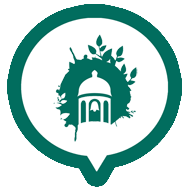The history of the House of Augustenborg began in 1651, when the founder of the town, Duke Ernst Günter, married his cousin, Princess Augusta of Glücksburg who was 24 years younger than him. In the same year he purchased a number of farms in the two villages of Stavnsbøl and Sebbelev. In Stavnsbøl he demolished some of the farms and started building the first palace in 1660. He finished it in 1663 and named it after his wife. The first Augustenborg Palace was born.
The first addition to the old palace complex took place when the old home farm burned down in 1730 and was replaced by the current, 25-bay long Marstald (horse stable) from 1733. It took almost 40 years before the current stables were completed around 1770. That only happened because the duke’s son, Frederick Christian I, married the wealthy princess Charlotte Amalie Vilhelmine of Plön. The large dowry made it possible to build the current Augustenborg Palace from 1770 until 1776.
The Dukes were very keen on horses and over time, the they built up one of the finest collections of horses in Northern Europe. It was also the Duke of Augustenborg who reinvented running at the ring (also known as tilting at the ring) and introduced horse racing in Denmark.
Augustenborg Palace is the largest and most complete baroque palace in Southern Jutland. Its prominence reflects the prosperity and progress of the ducal family at the end of the 18th century. The entire complex is built symmetrically around a fixed central axis. In the middle of the three-winged main building is a protruding middle part called a “risalit” (avant-corps). In the pediment, the duke’s coat of arms can be seen. Under the “tribute balcony” is the front door, which leads into a beautiful garden room with stucco work done by the renowned Italian stucco artist Michel Angelo Taddei. On both sides of the garden room are the formal rooms of the Palace, while the first floor was reserved for private apartments for the family, courtiers and guests.
It became an established tradition that the people of the town were allowed to gather around the windows on festive occasions, and when notable personalities, such as Hans Christian Andersen, were visiting the ducal family.
When you stand in the garden room, you are in the centre point of the 1.3 kilometre long east-west axis that runs from Slotsallé through the entire palace complex, and the garden, and ends at the fjord on the other side of the Forest.
The Palace was the seat of the ducal family for six generations – from Duke Ernst Günther to Christian August II of Schleswig-Holstein-Sønderborg-Augustenborg, the last duke to live at the Palace. He played an active part in the First Schleswig War (the Three Years’ War) on the side of Schleswig-Holstein.
When the Danish troops occupied Augustenborg, the duke had fled. Augustenborg was in Danish hands, and it was to be marked by hoisting the “Dannebrog”, but a Danish flag was not to be found anywhere in town, so they had to borrow a flag from the Danish-minded pastor Krog-Meyer in Ulkebøl.
After the war, the Danish army seized the Palace to be used as a field hospital and barracks.
After the Second Schleswig War in 1864, Southern Jutland became subject to the Prussian state, and the German administration chose to use the Palace as a teachers’ college for women. It is rumoured that some of the stucco motifs in the garden room were covered during this period because they were too “obscene”.
After 56 years of German rule, the Reunification took place in 1920, after which the Danish state purchased the Palace with its associated buildings, gardens and Forest. This was the second time that the Danish state had paid for the Palace. The first time was after the duke’s escape in 1848, where compensation was paid. After the war in 1864, the German authorities returned the Palace to the ducal family.
In 1929, the Danish parliament decided that the Palace should be used as a psychiatric hospital. Despite protests, the Palace opened as a state hospital in 1932. It was a psychiatric hospital for 83 years until 2015, when the Region of Southern Denmark decided to move the hospital to Åbenrå.
Today, Augustenborg Palace is home to the Danish Agricultural Agency. Relocation of government jobs resulted in about 300 jobs moving to Augustenborg in 2016.
The Palace buildings are not open to the public. However, the Palace church, which is a parish church, is open to the public. The church is located in the north wing of the Palace with access from the north side. Discover the full story in the app when you reach the church. Also please, visit the Mini Museum in the gatehouse for the whole history of the ducal family.

